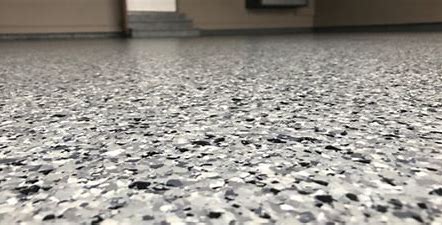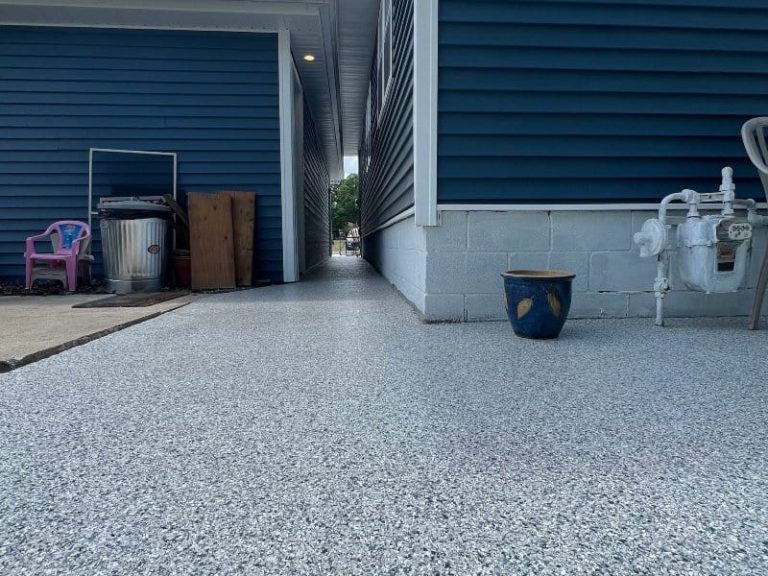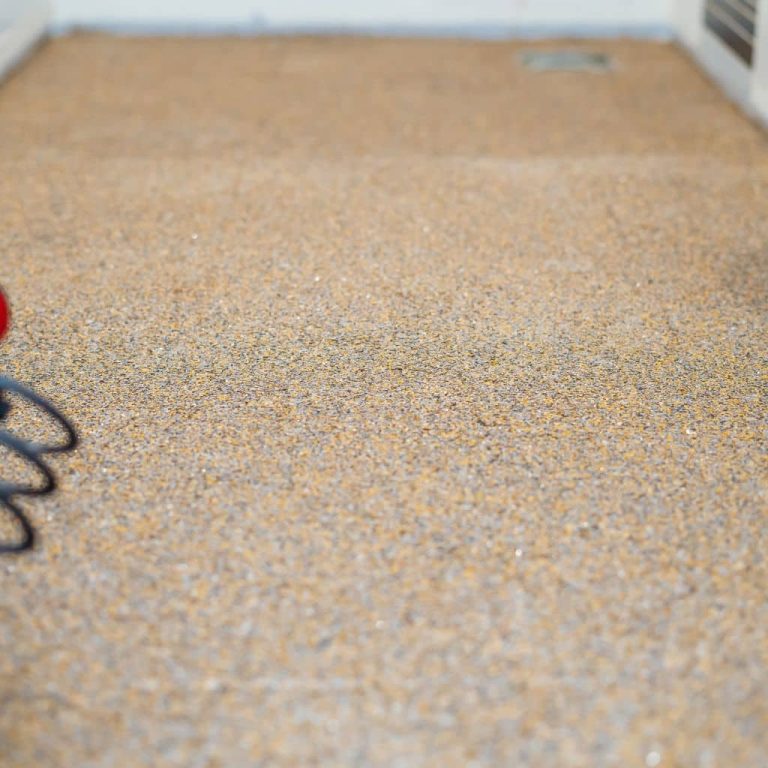When it comes to upgrading a garage floor, homeowners often find themselves torn between two main types of coatings: epoxy and polyurea. Both promise a more attractive look than bare concrete, along with extra protection from stains, moisture, and daily wear. However, they differ significantly in terms of cost, durability, flexibility, and installation time. In a recent conversation, coating expert Crayton Caudill underscored the fact that “polyurea has some superior technologies compared to epoxy,” adding that polyurea is “proven to be up to five times stronger than your standard epoxy.”
But are these claims enough to justify any extra expense? Which coating is best for your specific garage or indoor floor? Below, we’ll dive into what makes epoxy and polyurea distinct, compare their strengths and weaknesses, and help you understand which option might be the better fit. If you’re considering a concrete floor upgrade, you’ve come to the right place.
Understanding Epoxy: The Classic Choice
What Is Epoxy?
Epoxy coatings are made by mixing a resin and a hardener that chemically bond to form a hard plastic-like surface over concrete. Popular for decades, epoxy has built a solid reputation for providing a protective, glossy finish that can be enhanced with color pigments or decorative flakes.
Pros of Epoxy
- Cost-Effective (Short-Term): Epoxy can be less expensive initially than some polyurea systems. You can purchase DIY kits at many home-improvement stores, making it appealing for homeowners on a tight budget.
- Decent Durability (In Moderately Used Spaces): Epoxy works well in garages or basements with limited foot and vehicle traffic, often lasting several years when properly installed and maintained.
- Versatile Looks: With a variety of colors and finishes, epoxy coatings can be adapted to personal tastes, whether you want a subtle gray or an eye-catching design.
Common Drawbacks of Epoxy
- Rigid Structure: Epoxy lacks the flexibility needed to cope with significant concrete expansion and contraction. Over time, this rigidity can lead to cracks or peeling in environments with extreme temperature fluctuations.
- Long Curing Time: Some epoxy formulas require multiple days to cure fully. This means you might have to keep your car and belongings out of the garage for up to a week.
- UV Yellowing: Epoxy coatings tend to degrade or discolor in areas that see direct sunlight, such as garage entrances with open doors or windows.
- Susceptible to Hot-Tire Pickup: Epoxy can peel when a hot car tire rests on it repeatedly, particularly if the coating isn’t very thick or the substrate wasn’t prepared well.
For these reasons, epoxy might still be fine for a lightly used garage, but many homeowners and professionals have started looking toward more advanced options that last longer and cure faster.
Enter Polyurea: The Next-Generation Coating
What Is Polyurea?
Polyurea is an advanced type of elastomer—essentially a flexible yet extremely tough material—often combined with a polyaspartic top coat to provide a glossy, UV-resistant finish. In recent years, it has become the go-to choice for those seeking top-tier durability, chemical resistance, and an attractive finish that stands the test of time.
As Caudill notes, “Polyurea has some superior technologies compared to epoxy,” making it an especially popular pick for garages, basements, workshops, and even commercial settings. In fact, certain formulas are so strong and flexible that they’re used on bridges to handle constant stress, extreme weather, and temperature changes without cracking.
Advantages of Polyurea
- High Durability: Polyurea’s claim to fame is that it’s “up to five times stronger than your standard epoxy.” This means you’re far less likely to see chipping, peeling, or cracking under heavy use or sharp temperature fluctuations.
- Flexibility: The elastomeric nature of polyurea allows it to stretch slightly as the underlying concrete expands and contracts. Epoxy can’t offer this level of give, making it more prone to failure in harsh climates.
- Quick Cure Time: Many polyurea coatings can be installed and cured within a day, letting you return your car and other items to the garage soon afterward. That’s a big plus for busy homeowners who can’t spare a week of downtime.
- UV Resistance: The addition of a polyaspartic top coat helps ward off yellowing, even in spaces with strong sunlight exposure.
- Chemical Resistance: Polyurea generally shrugs off chemicals like oil, gas, brake fluid, and road salt better than epoxy does, ensuring longer-lasting protection for your concrete slab.
Potential Downsides of Polyurea
- Higher Upfront Cost: You can often expect to pay more for a professional-grade polyurea system, though the price range (commonly 7 to 12 dollars per square foot) can vary based on the size of your project, location, and the existing condition of your slab.
- Application Sensitivity: Polyurea sets up quickly, which makes it somewhat tricky for do-it-yourselfers. Installation is typically best left to experienced professionals with the right equipment.
- Thinner Appearance: Polyurea coatings are sometimes thinner than epoxy, although they’re significantly stronger and more flexible. This can surprise homeowners used to the thicker, sometimes “chunkier” look of epoxy. In practice, the perceived thinness rarely affects performance.
Overall, polyurea represents a longer-term investment with fewer maintenance headaches than epoxy. If you plan to stay in your home for many years or want a premium finish that looks good enough to turn your garage into a showpiece, polyurea usually wins out in terms of total value.
Performance Showdown: Polyurea vs. Epoxy
1. Strength and Flexibility
- Epoxy: Can handle moderate impact and traffic. However, its rigid nature means it can’t flex with concrete movement, increasing the risk of cracks.
- Polyurea: Typically up to five times stronger. Its elasticity means it can absorb shocks and accommodate minor shifts in the slab. That’s why it’s used in heavy-duty and industrial settings, as well as on bridges and highways.
2. Durability and Longevity
- Epoxy: Lifespan averages 5 to 10 years under normal residential conditions, though peeling or chipping might occur sooner if installed incorrectly or exposed to rough use.
- Polyurea: Often lasts 20 years or more, especially with proper prep work and installation. This is doubly true in climates with extreme temperature changes, where its flexibility is a huge advantage.
3. Curing Speed
- Epoxy: Requires multiple days (sometimes up to a week) before you can drive on it.
- Polyurea: Cures within hours, often allowing next-day or even same-day use. This is beneficial for those who can’t leave their car outside for too long or have busy family schedules.
4. Aesthetic Retention
- Epoxy: Prone to yellowing when exposed to UV light. If your garage gets a lot of sunlight, the once-vibrant coat might fade or turn amber over time.
- Polyurea: Maintains color far better, especially if sealed with a polyaspartic top coat designed to resist UV rays. You’re less likely to see noticeable discoloration even years down the road.
5. Maintenance
- Epoxy: It’s relatively easy to clean but can develop stubborn stains and scuff marks. Hot tires may degrade the surface, and spalling or cracks can appear without much warning.
- Polyurea: Typically more resistant to oil, chemicals, and road salt. With minimal upkeep—like occasional mopping or rinsing—your floor stays looking nearly brand-new.
6. Cost vs. Value
- Epoxy: Lower initial cost but often requires re-coating or repairs within a decade (sometimes sooner), raising the total expense over time.
- Polyurea: Higher upfront cost but potentially lower lifetime cost if you never have to worry about peeling, re-installations, or extensive repairs. This can be an investment that pays for itself over the long haul.
Installation Considerations
Surface Preparation
Regardless of whether you choose epoxy or polyurea, proper preparation is critical. Installers typically diamond-grind or shot-blast the existing concrete to open up its pores, removing contaminants and creating a strong mechanical bond for the new coating. Failing to prepare the floor correctly is the number one reason coatings fail prematurely.
Polyurea’s rapid cure time means the contractor must work quickly and precisely. Epoxy gives more working time but often needs extra coats and extended drying periods.
Crack and Moisture Repairs
If your floor shows significant cracks or moisture issues, these must be addressed before any coating application. Polyurea can handle minor moisture better than standard epoxy, but extreme vapor emissions might require a separate moisture barrier.
DIY vs. Professional
While some homeowners successfully apply epoxy themselves using store-bought kits, the results can vary widely. Achieving a thick, uniform epoxy coat demands skill, patience, and the right tools—not to mention protective gear for dealing with chemical fumes.
Polyurea is even more specialized; its quick setting times require professional-grade equipment and advanced know-how. Most polyurea coatings are best left to certified installers who ensure the surface preparation, mix ratios, and application all meet high standards.
Ideal Use Cases
When to Opt for Epoxy
- You’re on a tight budget and don’t mind a moderate-lifespan solution.
- Your garage or space sees light to medium usage without heavy machinery or extreme temperature swings.
- You’re comfortable re-coating in a few years if necessary.
- UV exposure is minimal—your garage doesn’t get direct sunlight or the door stays closed most of the time.
When to Invest in Polyurea
- You want a top-of-the-line product that lasts 15, 20, or even 25 years.
- Your region experiences temperature extremes, which cause your concrete to expand and contract.
- You plan to use the garage intensively—for example, as a workshop or for frequent vehicular traffic.
- You value speed of installation and minimal downtime.
- Aesthetics are a priority, and you don’t want to risk yellowing or peeling from UV exposure.
Home Value and Long-Term Benefits
High-quality garage floors can enhance your property’s overall appeal. Potential buyers often appreciate a well-finished, low-maintenance garage that doesn’t show signs of wear or damage. For many prospective homeowners, seeing a premium floor coating is an indication that the entire property has been well cared for.
While it’s hard to put a precise dollar figure on how much a polyurea floor might boost your home’s resale value, it can certainly help your property stand out in a competitive market. Even if you don’t plan on selling soon, having a virtually maintenance-free garage floor that looks and performs at a high level can provide day-to-day satisfaction that’s hard to beat.
Common Myths
- Myth: Epoxy and Polyurea Are Essentially the Same
Fact: Though both are poured or rolled onto concrete, the chemical composition differs drastically. Polyurea’s elasticity and strength set it apart from epoxy’s rigid structure. - Myth: Thicker Always Means Stronger
Fact: Thickness can be deceiving. Polyurea may go down thinner but actually form a more durable and longer-lasting bond due to its superior molecular structure. - Myth: UV Yellowing Only Happens Outdoors
Fact: Epoxy can degrade or change color from indirect sunlight that seeps into a garage or basement window. Polyurea polyaspartic remains far more color-stable in both direct and indirect sunlight. - Myth: Coatings Fix Structural Issues
Fact: Neither epoxy nor polyurea can remedy severe foundation problems. Professionals will assess cracks and attempt repairs, but major underlying issues might require specialized structural fixes.
Practical Tips for Getting the Most Out of Your Coating
- Choose an Experienced Installer: The difference between a great floor and a poor one often lies in the craftsmanship. Request references, read reviews, and ask about warranties.
- Clean Spills Promptly: While both epoxy and polyurea resist chemicals and stains, cleaning up oil, gas, or paint soon after spills prolongs the life and appearance of your coating.
- Check for Moisture Issues: If you suspect your slab has high moisture vapor emission, have a professional conduct tests. Laying any coating over a damp slab can spell trouble down the line.
- Ask for a Demonstration: Many contractors can show you side-by-side samples of cured epoxy versus polyurea, demonstrating the latter’s superior flexibility and toughness.
- Consider Slip Resistance: Garage floors can become slippery when wet, so you may want to add slip-resistant additives, especially in climates with snow or rain.
Conclusion
So, is epoxy or polyurea better? The short answer: Polyurea reigns supreme for homeowners who want maximum longevity, minimal maintenance, and rapid turnaround times. Its elasticity and strength—“up to five times stronger than your standard epoxy,” as Crayton Caudill points out—make it especially valuable in regions with temperature extremes or for garages that see heavy use.
While epoxy can suffice in certain conditions—particularly when budgets are tight or usage is moderate—it generally requires more maintenance and may not stand up as well to UV exposure, harsh chemicals, or the natural flexing of concrete. If you’re ready to invest in a premium system that will last for decades with minimal fuss, polyurea is likely your best bet.
Beyond just durability, it also offers superior curb appeal, faster cure times, and a range of decorative options. From a homeowner’s perspective, it’s truly a “set it and forget it” approach—one that can elevate your garage from a standard storage space to a polished extension of your home.


